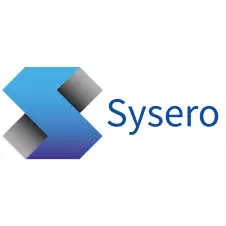Sysero: Why automate legal workflows in your firm
Workflows are a critical component of how any modern law firm operates. The term ‘workflow’ refers to the process of completing an orchestrated repeatable series of tasks to deliver a specific outcome. A great example of a legal workflow is the process of onboarding new clients, which typically involves multiple communication touchpoints and cross referencing across various systems.
Traditionally, the client onboarding process has relied on manual and time-consuming steps, which can inflate costs, frustrations, and the potential for negative consequences. When lawyers and staff rely on email-based communications and manual data entry, they are likely to miss steps or make simple data entry mistakes – which can result in complex compliance issues and reputational risk.
Most of a firm’s workflows follow a set of repeatable tasks, whether its client intake, document generation or contract management. By digitising and automating these repeatable processes, firms can reduce the risk of error, speed up operations, and raise the quality of work produced. While there are plenty of reasons to automate your firm’s workflows, here are four key ways that automation can create a competitive edge for your firm.
Deliver Improved Services
Today’s legal clients demand the same 24/7 service they’ve come to expect from other areas of their lives, and it’s hard to be perceived as a value-added partner if your response time lags behind client expectations. Internal bureaucracy and manual processes can quickly erode client service.
However, automation can liberate lawyers and legal operations from the burden of manual processes and significantly improve the time it takes to conduct crucial legal processes, including client intake, document generation, and contract execution. Take for example, how Castren & Snellman (C&S) has enhanced its client service by automating document creation. By using technology to streamline document creation, C&S has shifted its lawyers’ time from drafting documents to providing valuable advice and insights to clients. Additionally, automated document workflows have enabled C&S to reduce the risk of human error and improve risk management through the standardisation of documents and customised instructions for use.
Automate a More Efficient Law Firm
According to a recent survey, 56% of UK law firms are prioritising investment in process automation technologies – and it’s no surprise why. Nearly 76% of legal professionals find it challenging to manage current workfloads, and over the next three years, workloads are only expected to increase.
By automating once time-consuming processes, firms can streamline, accelerate and improve key business processes, avoiding overworked lawyers and staff and increasing service levels. Additionally, by bringing key business processes to the cloud through cloud-based workflows, firms make it easier to conduct everyday business from nearly anywhere. Ultimately, this increased ease of access enables your firm to be more nimble, agile and adaptable to potential business disruptions.
Avoid Reputational Risk
Law firms rely on their reputations, and when lawyers manually draft documents or input data, they put your firm’s reputation at risk. Thanks to human error, inadequate internal controls, and lack of standardisation, manually processes are a risk management nightmare.
However, legal workflow automation has the ability to strengthen compliance and help mitigate risk. By streamlining and standardising commonly used processes, workflow automation embeds compliance and data protection best practises into lawyers’ every day work. For example, with Sysero’s document workflow automation, you can lock clauses in certain documents and flag documents for periodic reviews to ensure quality and compliance.
Automation Increasingly Critical to Legal Processes
Today’s law firms face significant pressure to be more efficient, agile, and proactive – and the pressure is only mounting. Business resiliency has taken on greater importance for the modern firm, and more firms are recognising the need to embrace new technologies to transform the way they work.
According to PWC, one of the biggest challenges facing law firms is adapting to new working practises, and law firms’ top priorities are improving the use of technology, standardising and centralising processes, and improving legal services. To meet today’s challenges, law firms must unlock the full potential of legal workflow automation. It’s ultimately the only way to create greater agility, minimise risk, and deliver superior services in the modern marketplace.
Are you considering legal workflow automation for your firm? Get in touch with us to discuss the best way to solve your firm’s unique challenges. If you’re just starting to consider automation for your firm and finding yourself overwhelmed with the possibilities, remember it’s okay to start small and automate incrementally. The most important thing is to get started, before it’s too late.



